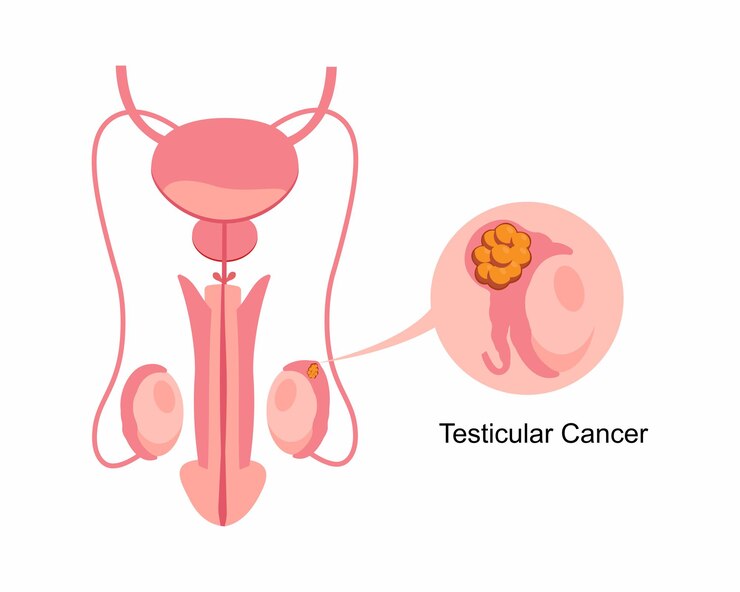Testicular cancer

What you should know
Testicular cancer is one of the commonest cancers affecting young males, especially those between the ages of 15 – 44 years. However, many young men still are not aware of the condition and do not regularly examine their testes. Despite this, early diagnosis and effective treatment options are available and testicular cancer has more than a 90% cure rate.
The commonest symptom of testicular cancer is feeling a painless lump in the testis. Some persons may however feel mild discomfort in the area. Other symptoms can include swelling or redness of the testes, back pain and even shortness of breath.
How to do a testicular self-examination
Given the importance of early detection, it is important that all males regularly check their testes. The best time to examine the testes is after a bath or shower when feeling relaxed. Each testis should be examined in turn. First thoroughly inspect both testicles to look for any obvious abnormalities like skin changes, and any significant size difference between the two testes. Then hold one in the palm of your hand and use the thumb and finger to gently feel the testes and associated structures. Then examine the other testis. It is normal for one testicle to be slightly bigger than the other and for one to be slightly lower/higher than the other. The testicles should feel smooth and soft in the scrotum like a soft ball, with a soft structure on top of the testis.
What to do if you find a lump
If you notice any changes in the size or appearance of the testes or feel any abnormal lumps, it is important to consult with a healthcare professional who will examine the lump and request a few more tests such as an ultrasound scan if needed. Most testicular lumps and changes are not cancerous. Further tests such as an MRI scan (Magnetic Resonance Imaging Scan), chest X-ray and cancer specific blood tests may be ordered to confirm a diagnosis and understand the extent of spread if it is cancer.
The mainstay of managing testicular cancer is surgical removal of the testes, but most patients will also require chemotherapy or radiotherapy depending on the spread of the cancer. Treatment for testicular cancer does not routinely affect sexual function like getting an erection, but the chemotherapy and cause a loss of interest in sex initially until the patients fully recover. Surgical removal of one testes will not affect fertility, but chemotherapy treatment may cause temporary infertility.
Whilst talking about testicular cancer and spreading awareness amongst young males can be daunting, it is important to empower young men to self-examine. Remember that most lumps in the testes are not cancerous, but due to the importance of early diagnosis, it is imperative that you seek medical opinion as soon as possible if you feel a lump in the testes.
.png)



